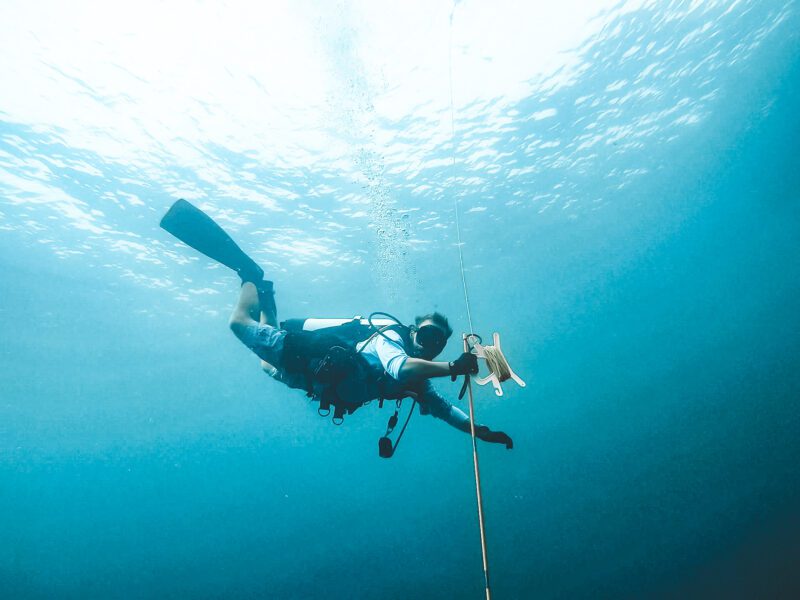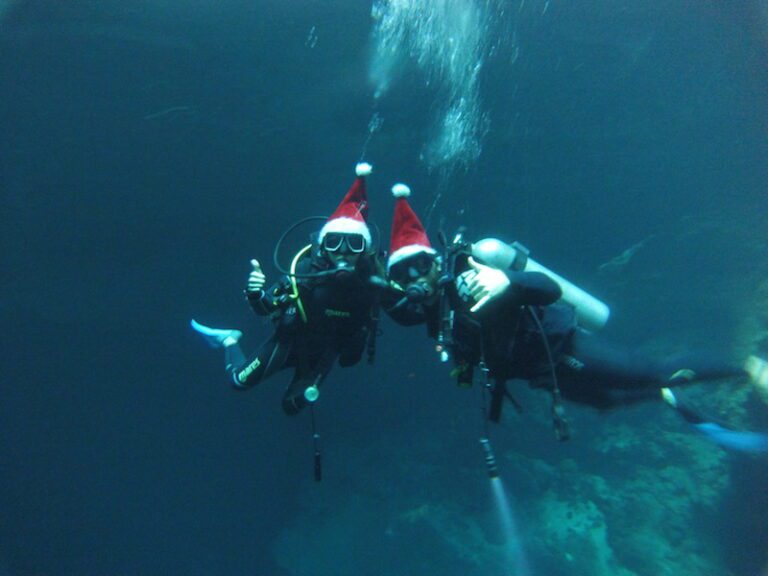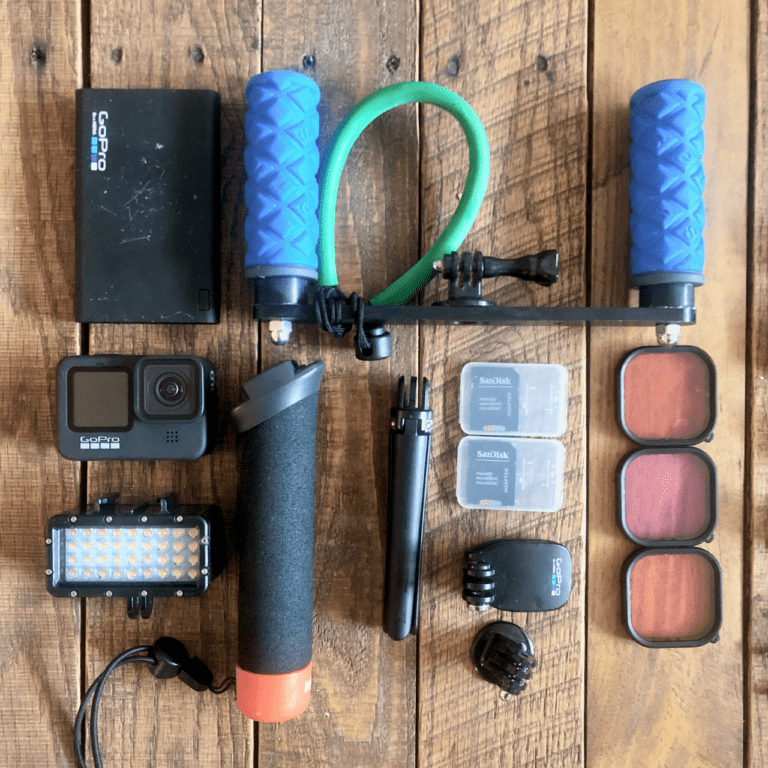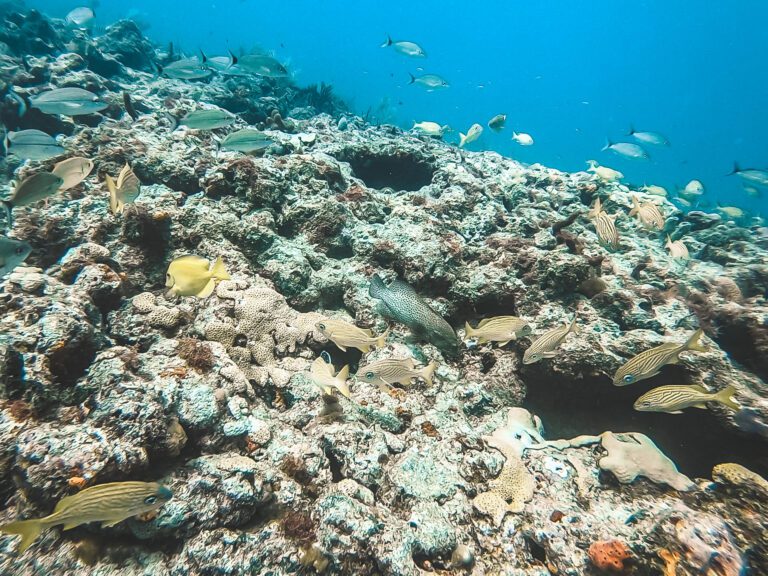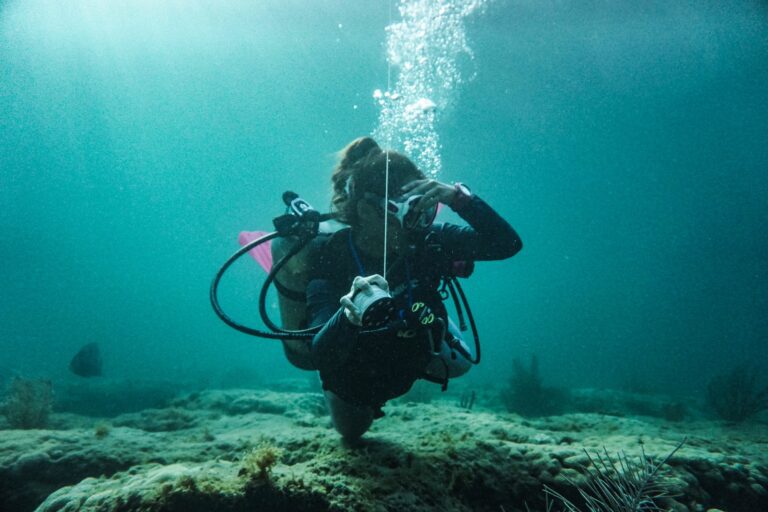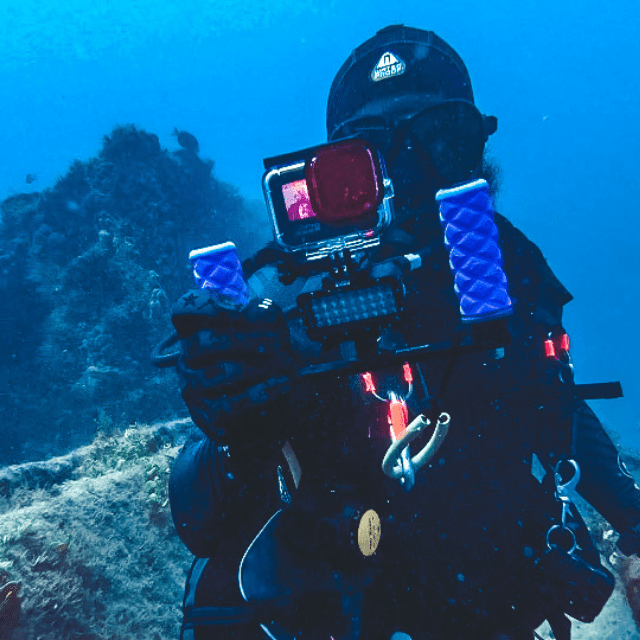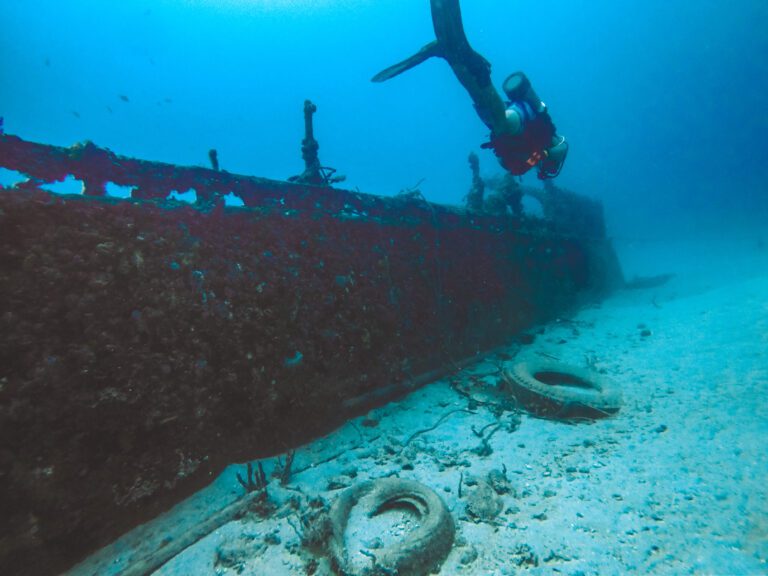How Much Weight Do I Need for Scuba Diving?
Everything you need to know to ensure you know how much weight you need for scuba diving.
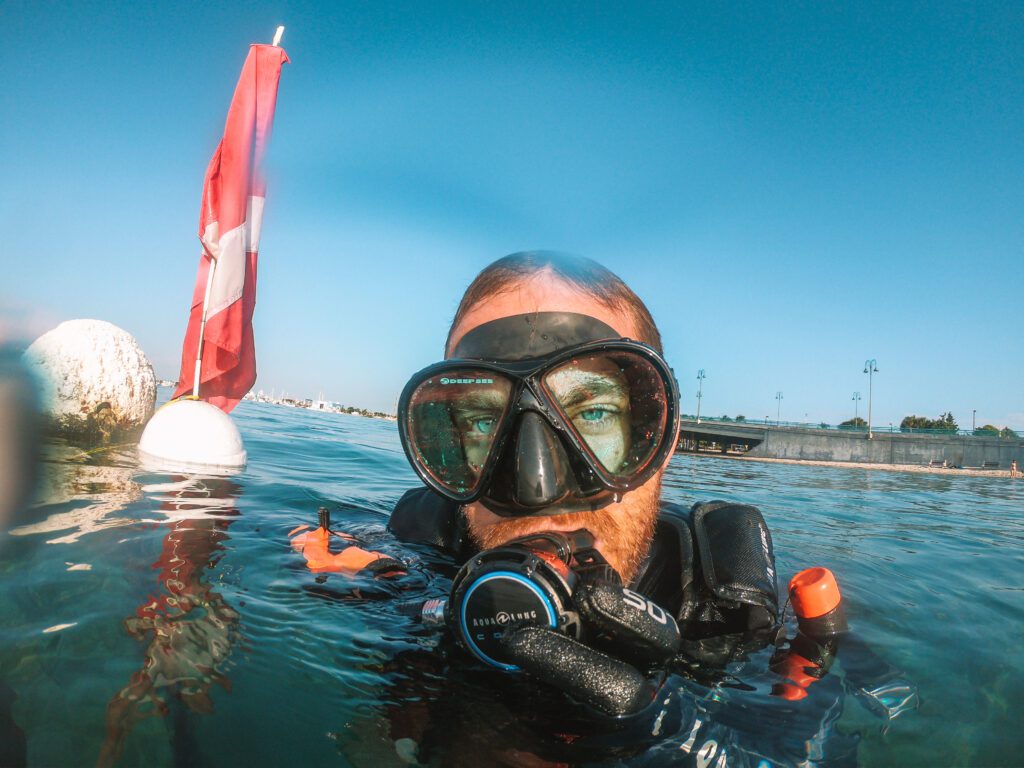
Out of all the problems divers tend to face, being weighted properly tops the list. Whether it be underweighted (they can’t sink) or overweighted (they sink), it happens to everyone.
And I’ll be honest, even as a professional diver with 100s of logged dives, I’m still trying to find the right weight balance. It’s a difficult thing to establish. On one hand, I want to sink like a stone. And on the other hand, I want to float like a butterfly underwater. Ya know? So how do you maintain that balance?
It’s a tricky thing. After all, the factors influencing your dive weight are forever fluctuating. It differs from day to day, what equipment you’re using for that dive, and seemingly, what you ate for breakfast that morning (kidding…kinda).
So let’s get into it. What’s the best way to decide how much you need for scuba? What factors affect this weight? We’ll answer those burning questions, but first, some important terminology:
You ascend while diving and/or float at the surface. Typically a result of being underweighted.
You sink while diving. Likely a result of being overweighted.
You neither sink nor ascend as you breathe regularly underwater. This is the goal and something us divers refer to as “Peak Neutral Buoyancy“. This is what we’ll strive to accomplish by the end of this article.
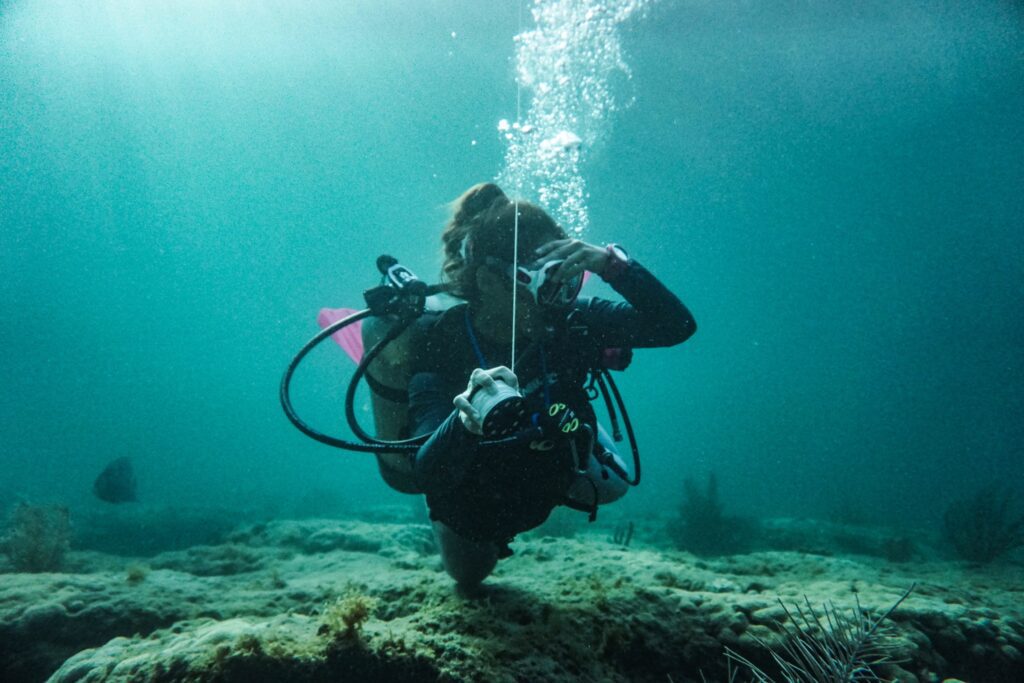
Quick Links for Proper Scuba Weight
Why It’s Important to be Properly Weighted While Diving
Although, just about every dive professional will tell you it’s better to be overweighted than underweighted, it’s still important to strike a balance. After all, we’re striving for peak neutral buoyancy here.
Why to NOT be underweighted
1. You can’t sink
And this is the exact reason why divers will tell you to overweight yourself if anything. You literally will not be able to dive if you’re severely underweighted. Can’t sink? Can’t dive. Simple as that.
2. You’ll start unintentionally ascending during the second half of your dive
Remember, as you breathe air from your scuba cylinder, the tank is actually going to become lighter. Hence, if you’re underweighted by even just a pound or two, the second half of your dive will be spent trying to NOT shoot towards the surface.
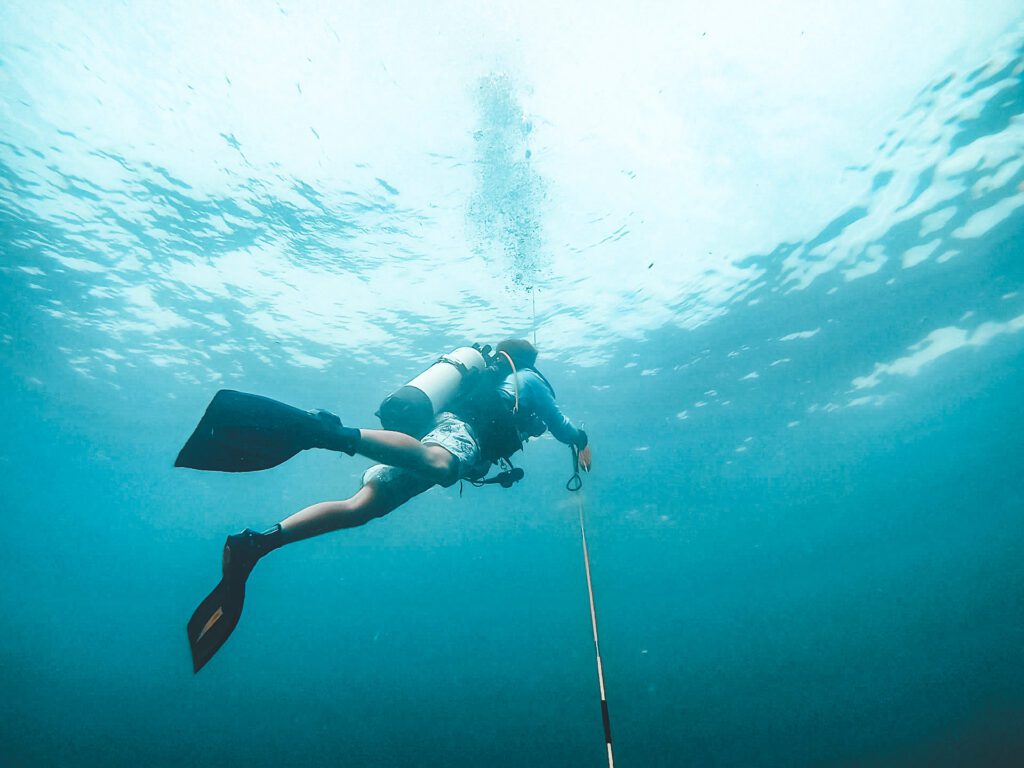
Why to NOT be overweighted
Sure, you’ll sink. But you’re going to have some other issues…
1. You’ll use more air
If you’re overweighted, you’re going to end up using a lot more air than if you were properly weighted. All that weight is difficult to move underwater and your increased air consumption will reflect that. Not to mention, all the air you’ll use to simply fill your BC via your low pressure inflator hose.
2. You’ll harm important marine life
Severely overweighted divers don’t have the best buoyancy. This causes their bodies to sink to the bottom possibly brushing against, crushing or mangling marine life like coral, fish, algae and other sea creatures.
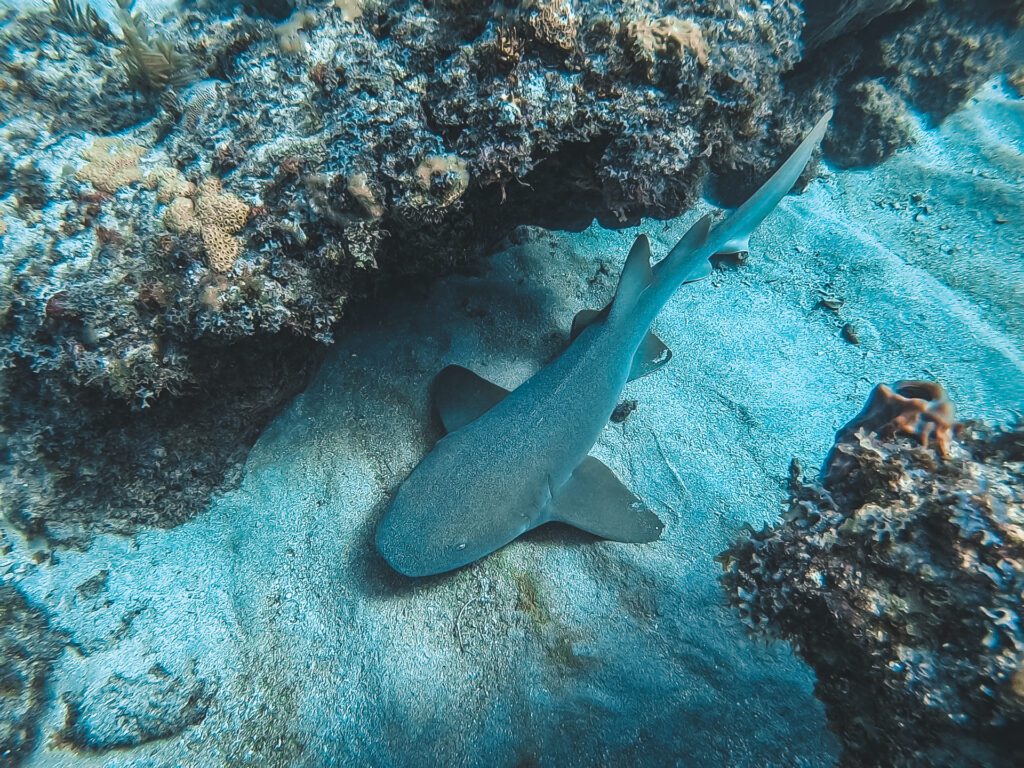
Calculating the Weight You Need for Scuba Diving
So that brings us to the logical question, “How much weight do I need for scuba diving? How do I properly calculate weight for my dive?”
There’s a variety of factors that contribute to how you should be weighted. Consider these when calculating the weight you need for diving:
1. Your Weight and Body Composition
The biggest contributing factor to how much weight you should add for scuba diving is your own weight and body composition. Particularly body fat.
Leaner body compositions tend to sink easier. Conversely, those of us with a more average body type or a higher body fat percentage may need a few extra pounds of lead added.
SCUBA WEIGHT CALCULATOR
For me, as a semi-lean individual, I start at 5% of my body weight. For most, I find this to be a useful starting point.
Meaning, at 180 lbs, my baseline is around 8 to 10 lbs.
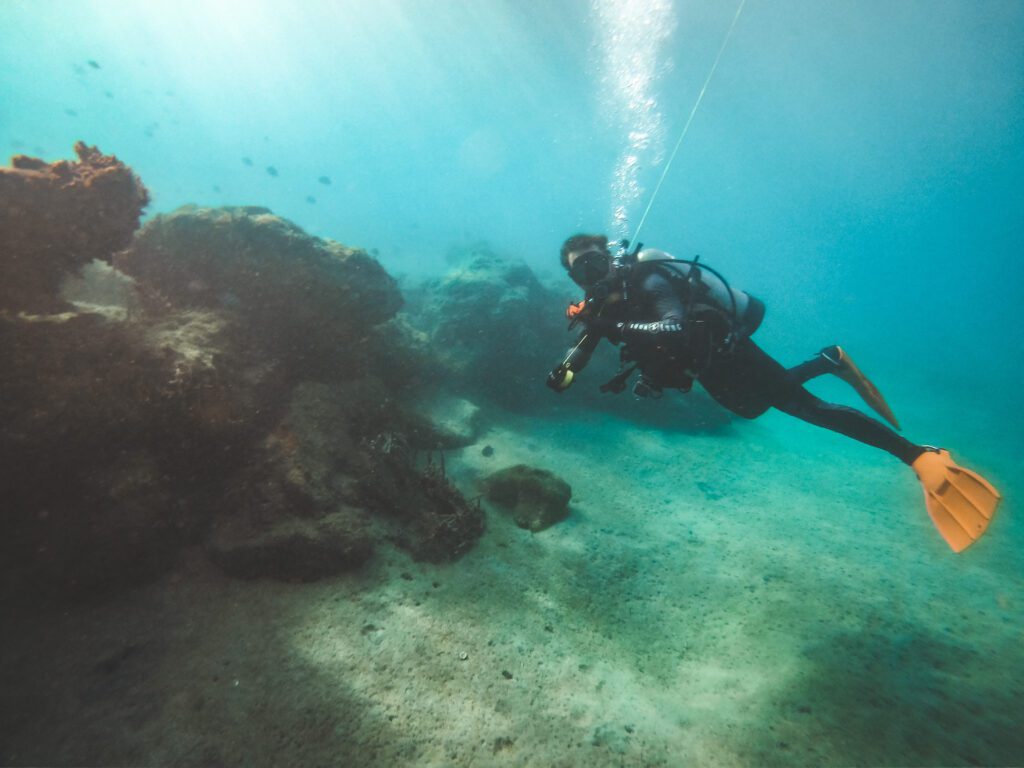
2. Exposure Suit
The exposure equipment you decide to wear greatly affects how much weight you need while diving. In fact, I believe this is the top reason that people enter the water underweighted. They simply don’t factor in all the extra layers of neoprene they just put on.
Which pieces of an exposure suit are we talking about? Well, all of them!
- Wetsuit. A thick wetsuit while diving in colder conditions will increase your buoyancy, thus requiring more weight.
- The same goes for your pair of gloves. It may seem trivial, but it adds extra buoyancy.
- Hoods to cover your head while diving. They’re thick. They consist of a lot of material. And they make you float more!
- Booties. If you wear open-heel fins with a set of booties (which we highly recommend for cold conditions), factor in the extra neoprene they’re made of.
Just remember: the thicker the material, the more positively buoyant you’ll be. For example, a 7mm wetsuit will make you float significantly more than a 1mm wetsuit.
Now how does that play out in terms of weight? Again, it’s a rule of thumb, but each additional mm of thickness equates to an extra 1 – 3 pounds of weight needed.
SCUBA WEIGHT CALCULATOR
After deciding which exposure suit you’re using, add to your baseline accordingly.
5% of your body weight + 1 – 3 lbs per mm of thickness.
3. Type of Tank: Steel or aluminum?
Generally speaking, steel tanks are negatively buoyant and will reduce the weight you would otherwise add. Obviously, this will be dependent on the size of the steel tank you use. The bigger the steel tank, the heavier it will be.
Aluminum tanks, on the other hand, will actually become positively buoyant during your dive. This is due to air consumption – you are literally breathing the tank to a lighter weight!
So again, how does this play out? A steel tank cuts down the extra weight you need while an aluminum tank should be calculated as normal.
SCUBA WEIGHT CALCULATOR
Most dive shops use Aluminum 80 tanks for their recreational dives. Calculate as normal.
However, if you’re using a steel tank, you can subtract some weight. About 6 – 10 lbs in our estimation.
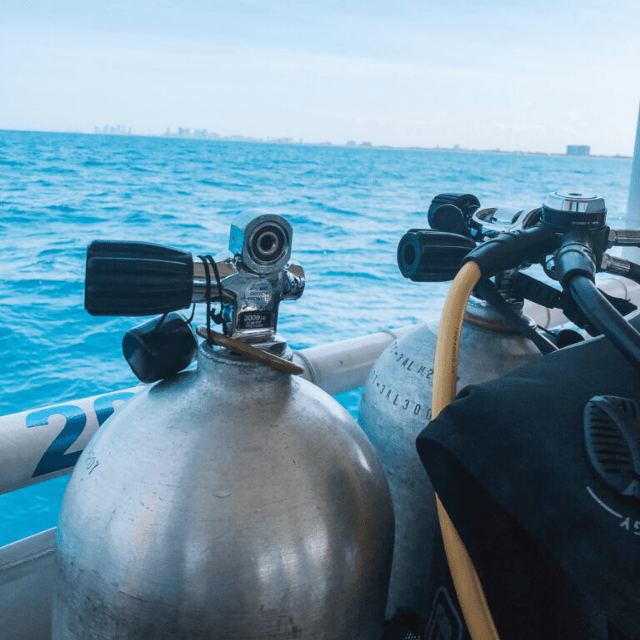
4. Salt or Freshwater
Humans are more positively buoyant in saltwater than freshwater. Meaning, it’s easier to float in saltwater than it is freshwater!
This means you need to add more weight to your scuba outfit to sink while diving in saltwater. This is especially important for divers who did their training in a pool, lake, or freshwater quarry before hopping into the ocean for the first time.
5. When all else fails…
I get it. All that might be HELLA confusing. So don’t worry. There’s a rule of thumb to guide you.
Albeit I’m not entirely sure I agree with it, but they say use 10% of your body weight if all else fails. I think it tends to overweigh you significantly, but at least you’ll be guaranteed to sink!
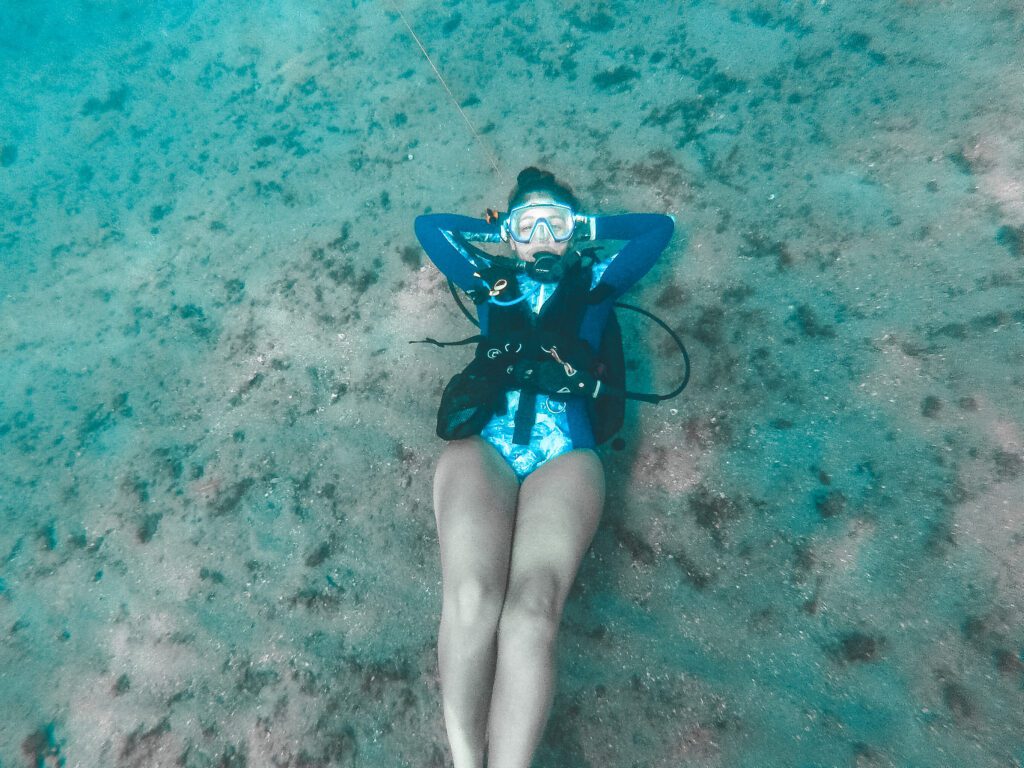
Scuba Diving Weight Calculator
And if you’re still uneasy, we’ve found a pretty kick ass scuba diving weight calculator from the ScubaOtter. They account for everything we just mentioned and the handy tool spits out your exact weight recommended! It’s strikingly accurate for me so I’d imagine it will be for all of you as well.
How to Know if You’re Weighted Properly
With all that said, how can you be sure that have the precise weight you need for scuba diving? Conduct a weight check, of course!
How to Conduct a Weight Check Before Your Dive
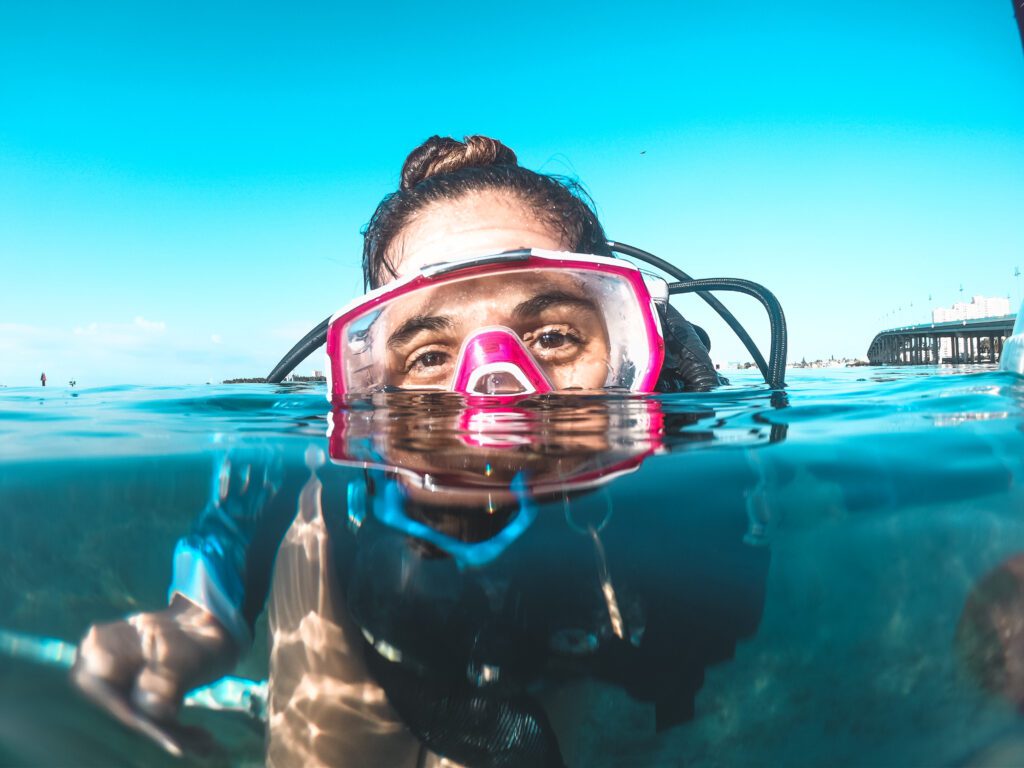
Preferably, use a tank that’s near empty (about 500 psi or 35 bar):
- Gear up with every piece of equipment you’ll be diving with and enter water that’s too deep to stand in.
- Take a deep breathe in and hold it.
- Position your body vertically in the water and completely deflate your BCD.
- Correctly weighted divers should sink slightly to eye level but not much further.
- If you’re sinking more than that while holding your breathe, you’re overweighted. If you’re unable to sink at all and your head remains above the surface, you’re underweighted.
- Adjust accordingly and repeat!
How to Conduct a Weight Check After Your Dive
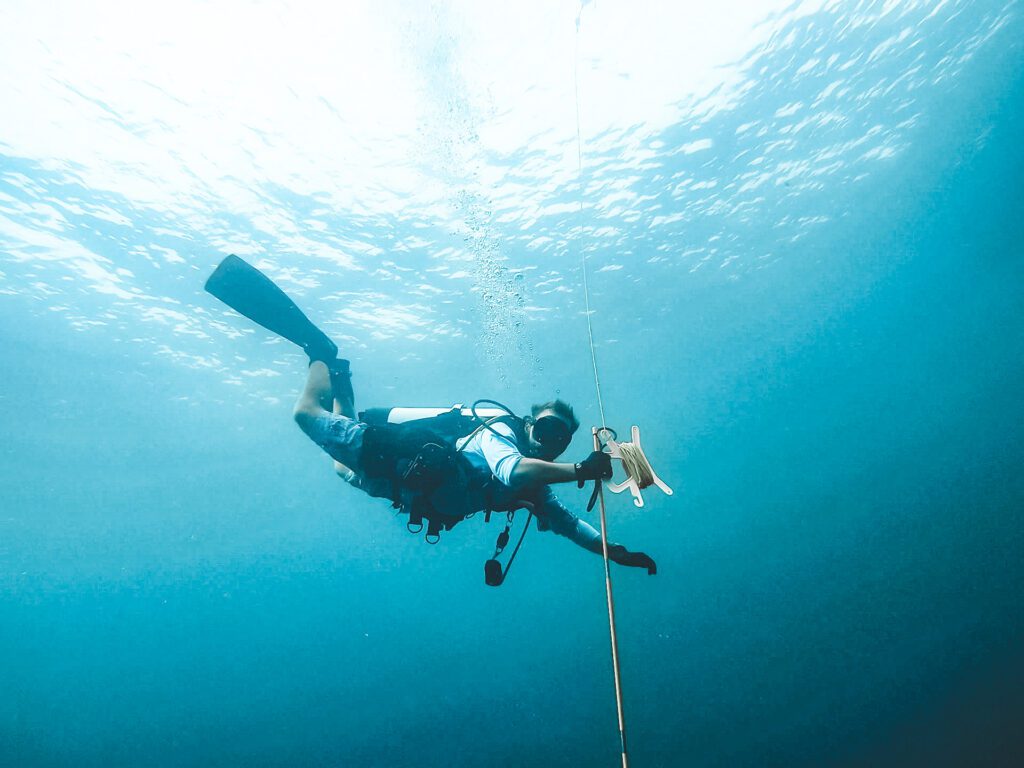
If you’re totally unsure and don’t have the chance to do a weight check before diving, this test is for you. Prior to your dive, make your best guess with a liberal approach to overweighting yourself.
Whilst conducting your safety stop at the end of your dive (3 minutes at 15 feet depth), see if you remain neutrally buoyant with no air in your BCD.
Take a deep breath in, you should rise just a touch. Now exhale, you should sink just a bit. Breathe normal and you should remain in the same spot at 15 feet.
Again, adjust accordingly after your dive!
Equipment for Properly Weighting Yourself While Diving
Between weighting systems and the weights themselves, these are the pieces of equipment you need to be familiar with for successful scuba diving.
Types of Weighting Systems

Weighting systems are where you store and attach the weight to your scuba outfit. You’ll find three different systems:
Integrated Weight Pockets
Most new BCD models have integrated weight pockets often identified by the large grey handle on both sides of the jacket. These are special removable pockets that can easily slide out and clipped back within seconds.
Trim Pockets
Two pockets on the back of the BCD on both sides near the tank. These allow divers to distribute weight more evenly throughout their body – thus altering their streamlined movements underwater.
Weight Belts
Older model and back-inflate BCDs utilize an additional weight belt to ensure proper dive weight. Some weight belts slide lead weights onto them. Others consist of neoprene pockets. Which you choose is entirely preference.
Types of Weights
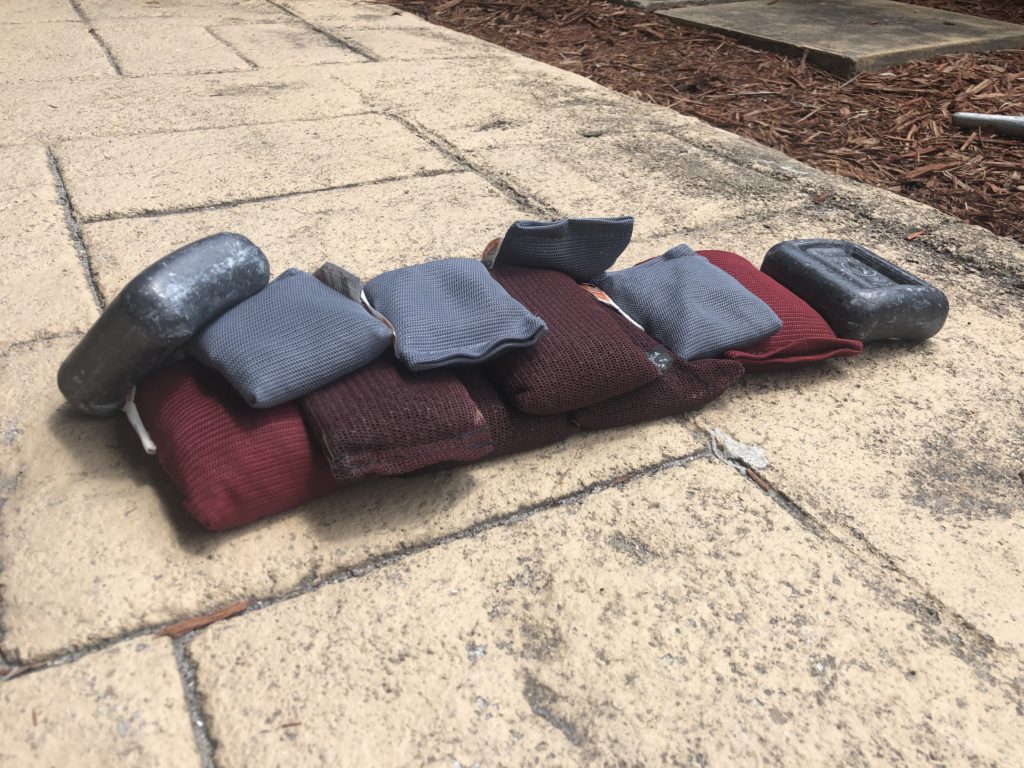
The two most common types of weights in scuba diving are soft weights and lead weights.
Soft Weights
Soft weights are flexible nylon mesh baggies filled with lead shots (small BBs). These are easiest for transport and feel much better if you accidentally drop them on your toes!
Lead Weights
Additionally, lead weights are handy to have around. The slits on the weight allow you to easily slide and secure on a weight belt.
Final Thoughts: How Much Weight Do I Need for Scuba Diving?
A couple key takeaways before you go:
- It’s better to overweight than underweight yourself.
- Although, being overweighted comes with its challenges.
- When deciding how much weight to use for your next dive, consider:
- Body Composition. Muscle sinks better than fat.
- Exposure Suit. Thicker wetsuits need more weight to sink.
- Steel vs Aluminum Tanks. Know which you’re using and how to adjust weight accordingly.
- Salt vs Freshwater. Humans float in saltwater more than freshwater.
- Rule of thumb. If all else fails, use about 10% of your body weight.
- Conduct a weight check before you go diving or at your safety stop to adjust for future dives.
- Familiarize yourself with weighting systems and types of weights.
- Invest in some soft weights!
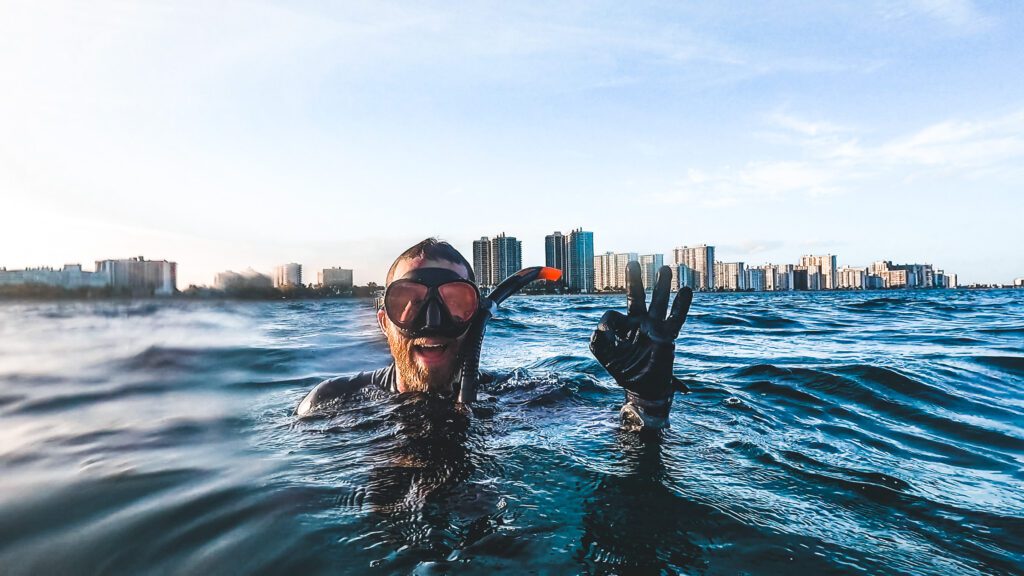
Enjoy this Post? Pin it!
Read More Scuba Diving Tips
We hope you enjoyed our post on how to calculate your dive weight. Hopefully you’ll find it useful on your next adventure! Here are a few more ocean-loving articles we think you should read next:
- A Scuba Diver’s Guide to Tipping (How to Tip Your Dive Crew Accordingly)
- 13 Tips for New Scuba Divers on Your First Boat Dive
- 17 Useful Tips for Better Underwater GoPro Videos – Scuba Diving
- How to Equalize While Scuba Diving
- 4 Easiest Methods of Water Entry in Scuba Diving
What tricks have you used when calculating your dive weight? Did we forget any factors? Let us know in a comment below!

